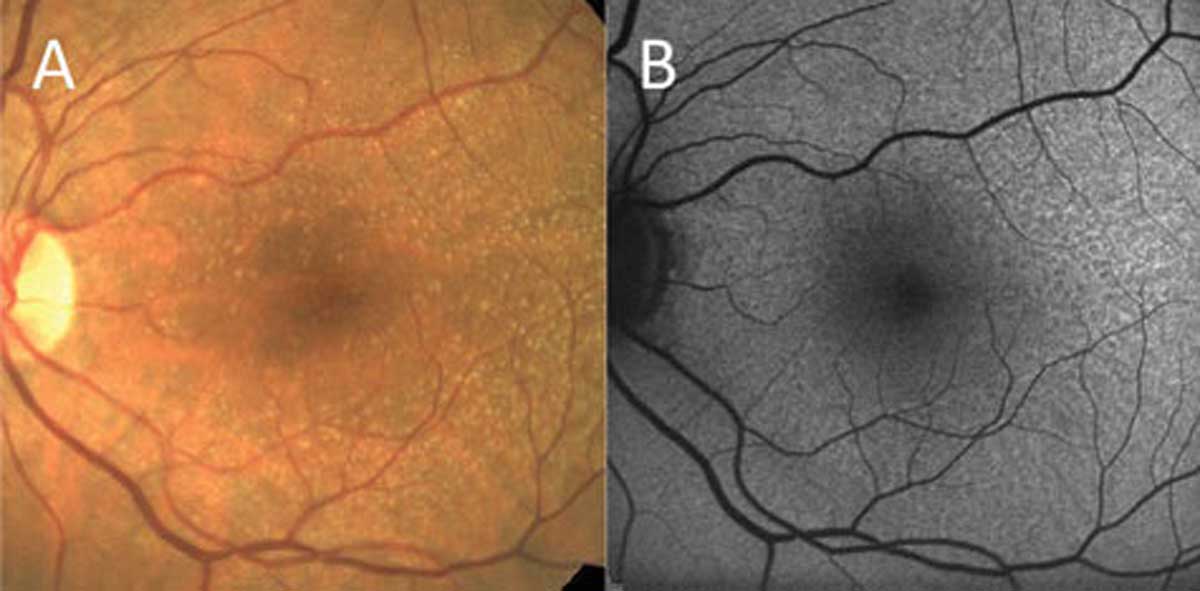 |
| Omega-3 may be a protective factor against AMD development. Photo: Mohammad Rafieetary, OD. Click image to enlarge. |
Researchers recently determined that higher levels of docosahexaenoic acid (DHA) and eicosapentaenoic acid (EPA) are associated with a reduced risk of early AMD. This study used objective measures of serum/plasma levels in blood rather than dietary intake estimates of omega-3 polyunsaturated fatty acids (PUFAs), which are more subjective and have been shown to underestimate true nutritional consumption.
The study population consisted of 3,772 individuals from the Multi-Ethnic Study of Atherosclerosis (MESA) with baseline PUFA measurements and retinal photography at exam five. Participants were of Caucasian, African American, Hispanic/Latino and Chinese descent, ages 45 to 84 and without cardiovascular disease. Fundus photographs were assessed for AMD using a standard grading protocol. Early AMD was defined by the presence of soft drusen, pigment abnormalities (decreased or increased retinal pigment), large, soft drusen ≥125µm in diameter with a large drusen area >500µm in diameter or large ≥125µm in diameter soft, indistinct drusen without signs of late AMD. Relative risk regression determined the association between PUFA levels and AMD.
There was a significant association between increasing DHA levels and increasing DHA + EPA levels with reduced risk for early AMD (214 participants with early AMD, of whom 46.3% were not Caucasian). Individuals in the two highest quartiles for DHA levels had a statistically significant 40% to 50% risk reduction for early AMD. Similarly, for DHA + EPA, the highest two quartiles showed a risk reduction ranging from 41% to 53% for early AMD.
However, increasing levels of EPA alone did not confer a consistent, statistically significant reduced risk for AMD. The researchers noted, “The statistically significant association seen in our study with increasing levels of DHA + EPA may simply reflect the association with DHA alone.” Still, adjustment for dietary quality did not impact the study’s findings, providing further support that AMD risk is specifically related to omega-3 fatty acid intake.
While of interest, the number of late AMD cases was too insufficient to analyze due to inadequate statistical power. “Once the number of late AMD events is of a sufficient number to achieve adequate statistical power, future studies on the association between omega-3 fatty acids and late AMD risk in the multi-ethnic MESA cohort will be of value,” the authors concluded in their paper. “The relationship between long-chain PUFAs and AMD in a multi-ethnic cohort has not been clearly elucidated.”
Karger AB, Guan W, Nomura SO, et al. Association of plasma ω-3 fatty acids with early age-related macular degeneration in the Multi-Ethnic Study of Atherosclerosis (MESA). Retina. March 9, 2022. [Epub ahead of print]. |

